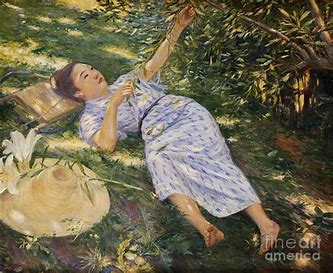Non Western Blog: Yōga Art

In this week's blog, I would like to introduce three Yōga style paintings. Yōga is an art movement that reflected modernization/westernization that was occurring in the last half of the 19th century in Japan. The Seiyōga or Yōga is often translated as "Western-style" painting. However, Yōga art is much more than a duplicate of Western art. "It was only in the aftermath of the Second World War that yōga came to be regarded as a unique genre within modern Japanese art." (Yokoyama, 2023) In 1853, U.S. Commodore Mathew Calbraith Perry brought his fleet to Japan under orders from President Millard Fillmore, demanding entrance to their ports. Japanese authorities were so impressed by the advanced technology of the Western world that they implemented a policy of opening the borders of Japan and adopting and researching some Western traits to accelerate Japan's advancement. The historical background to Yōga art development can be traced back to 1855 Bansho Sh


